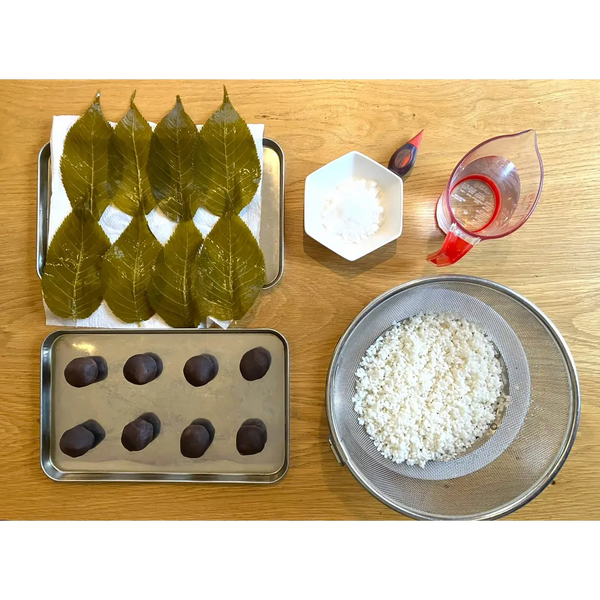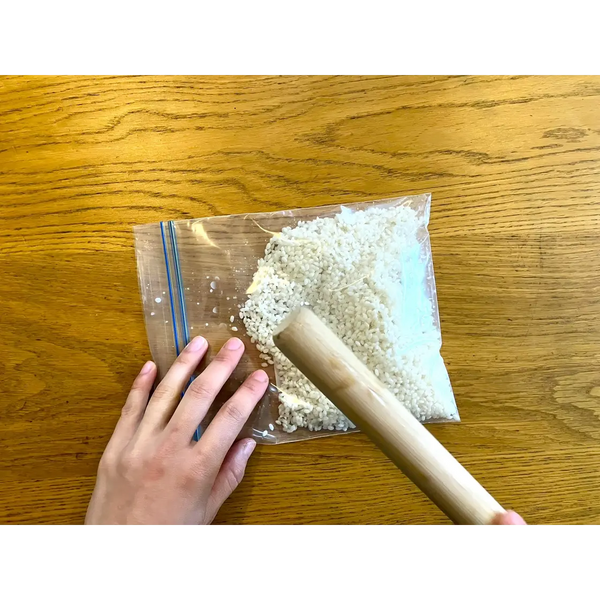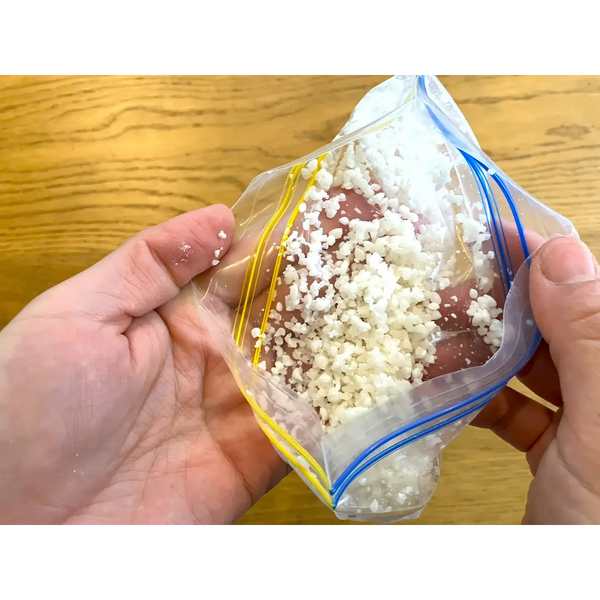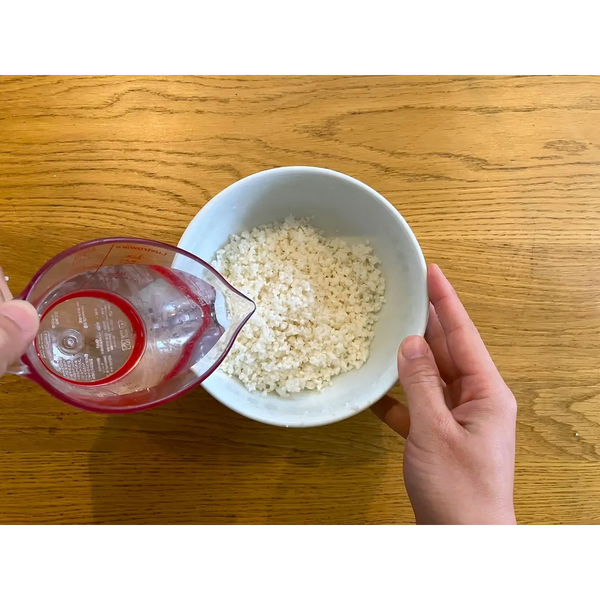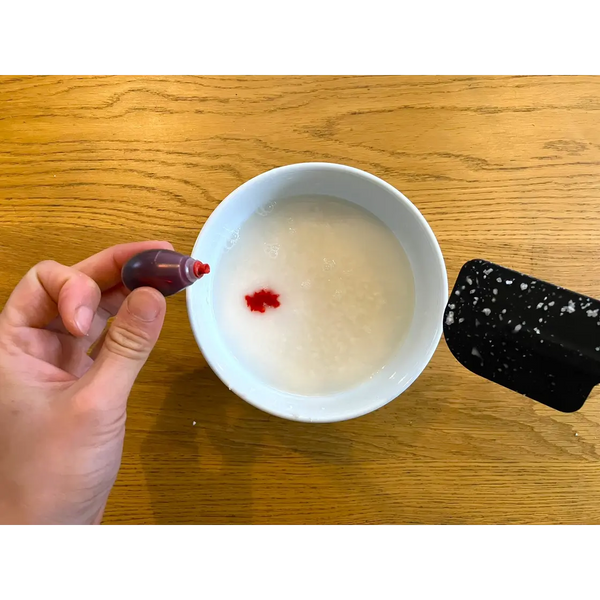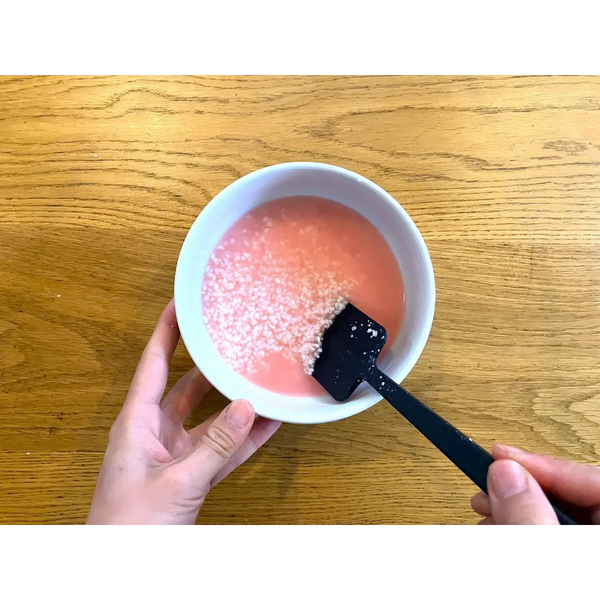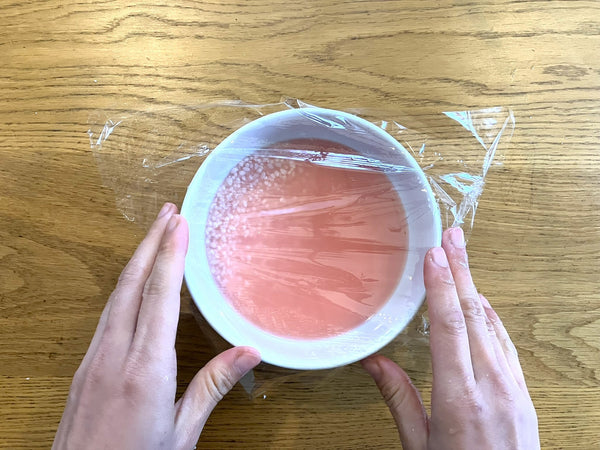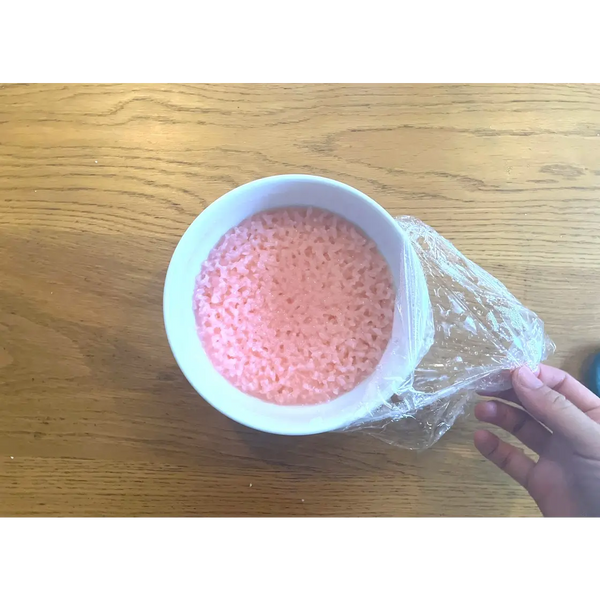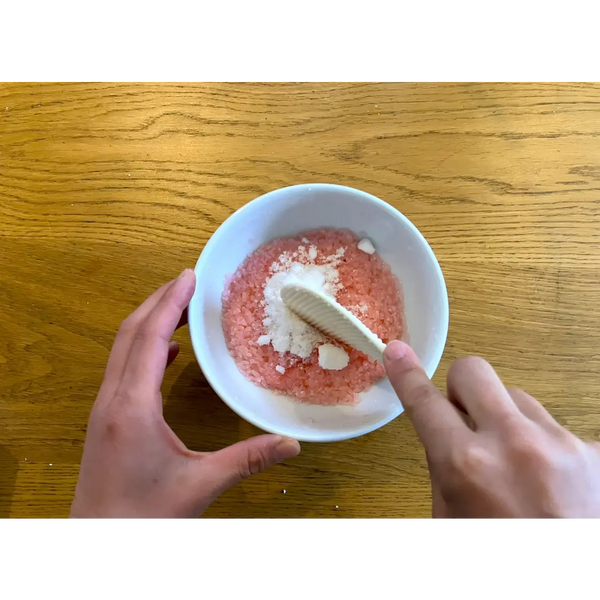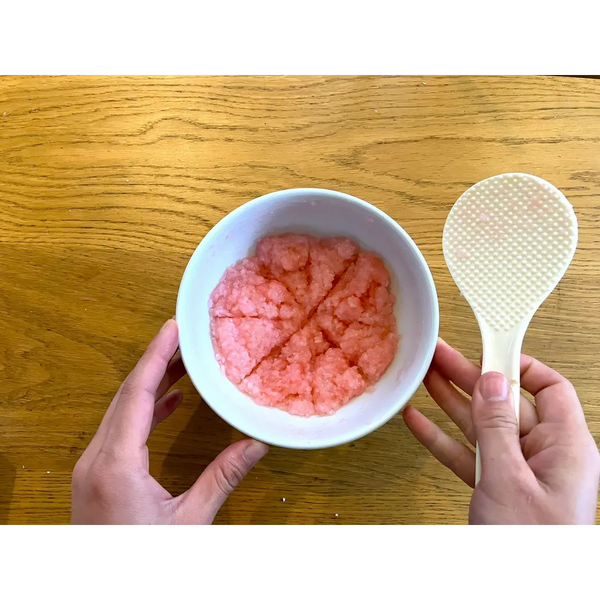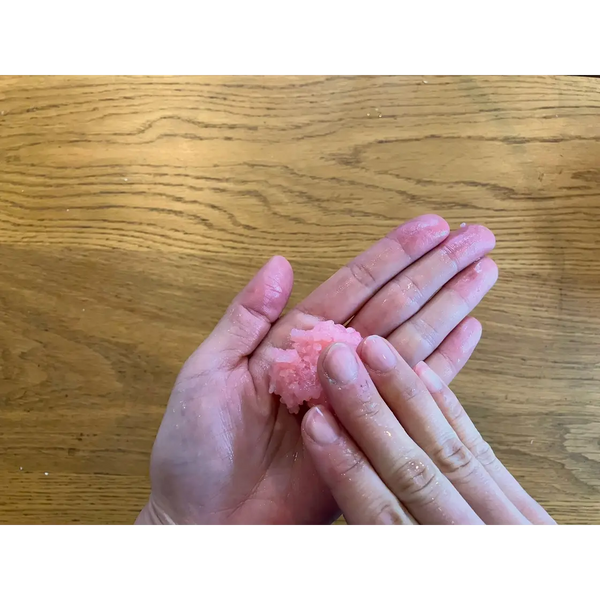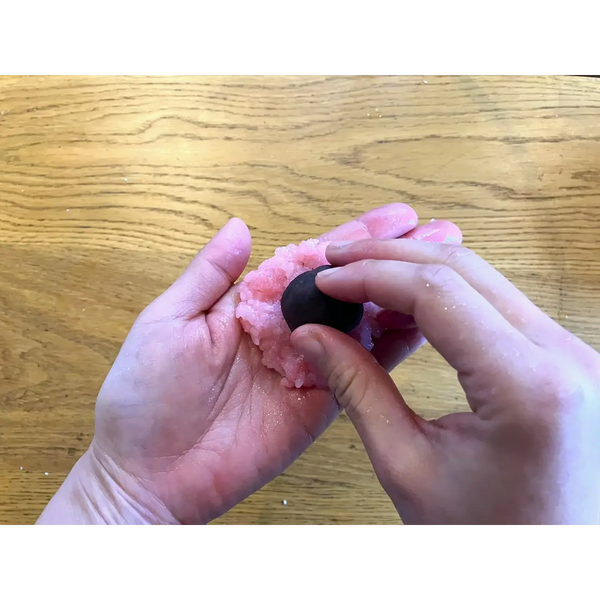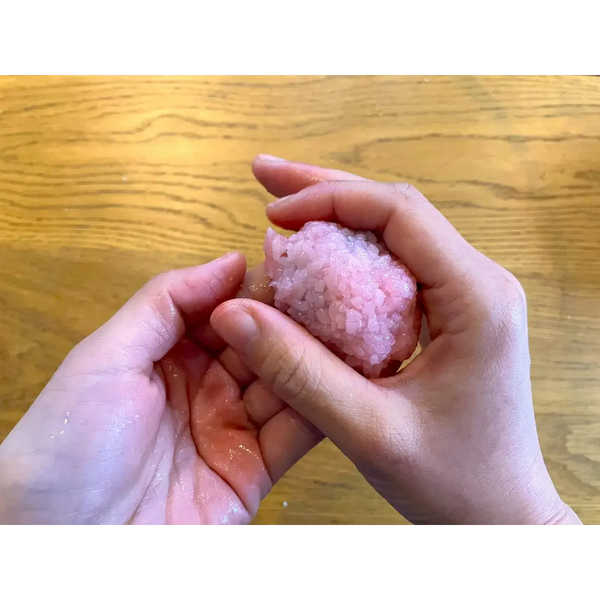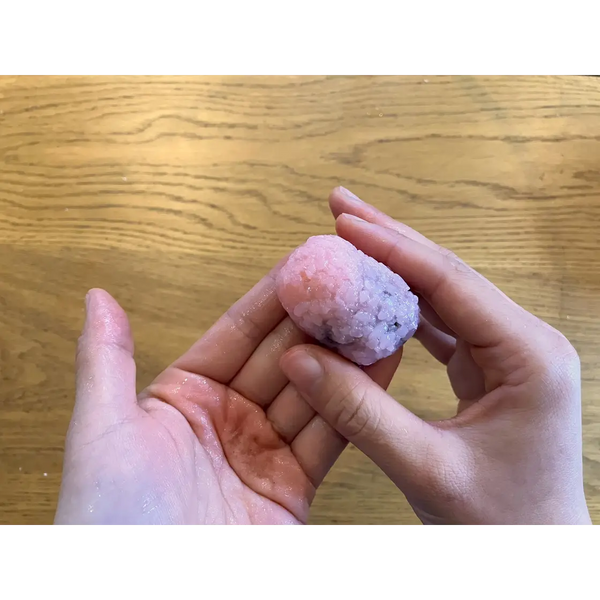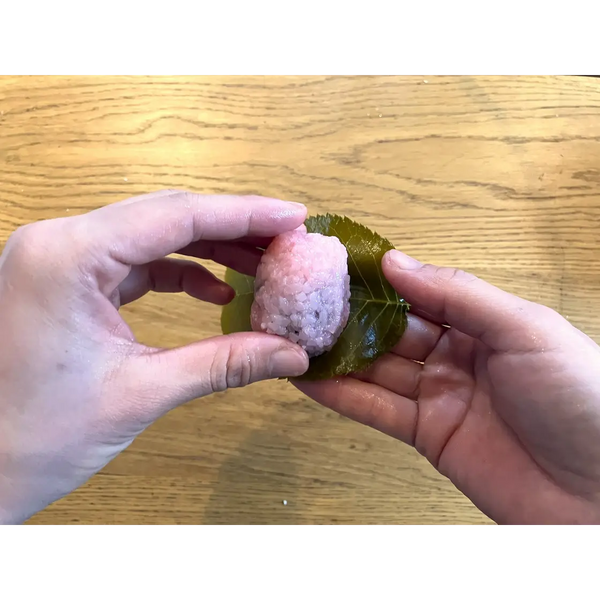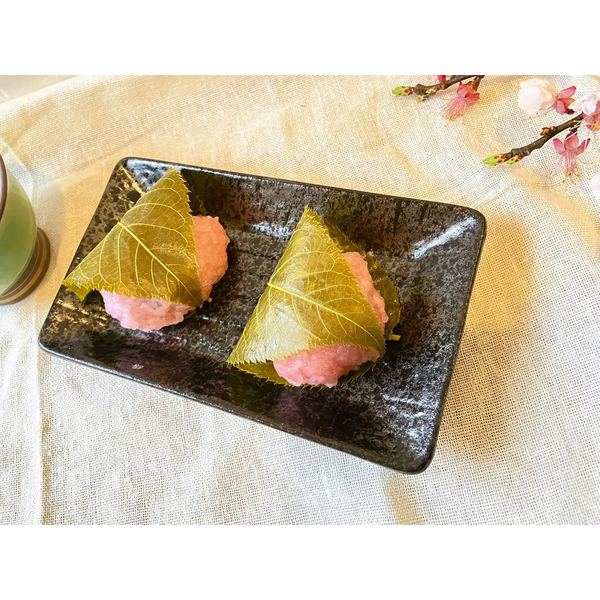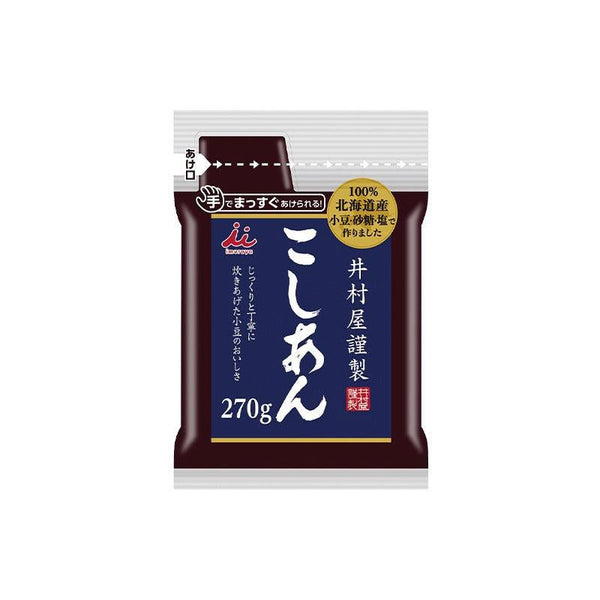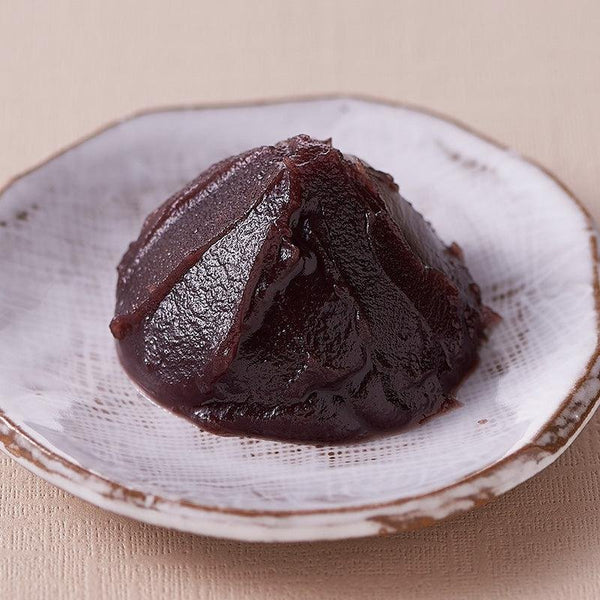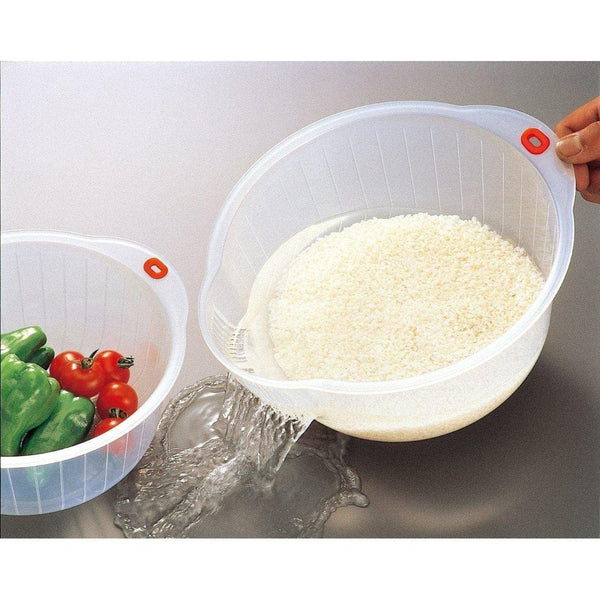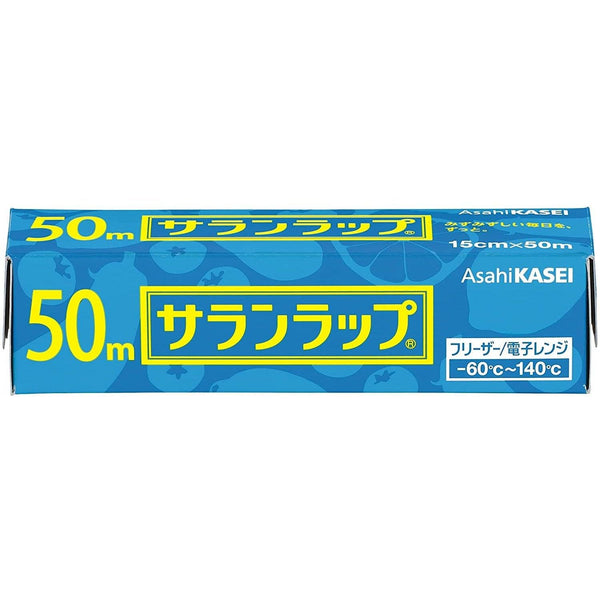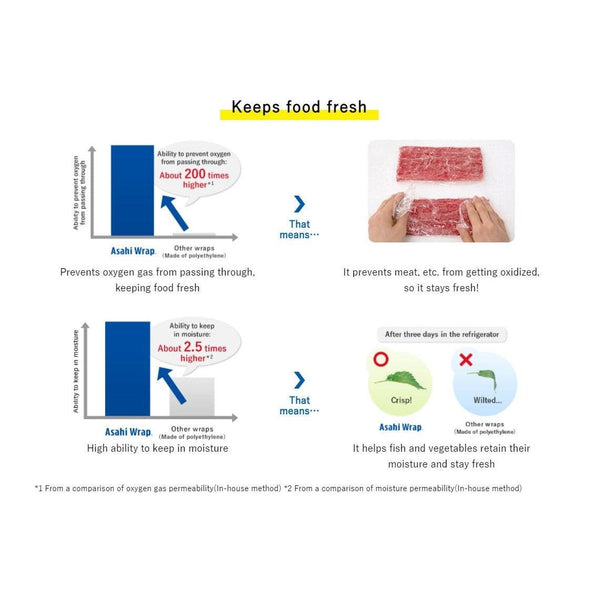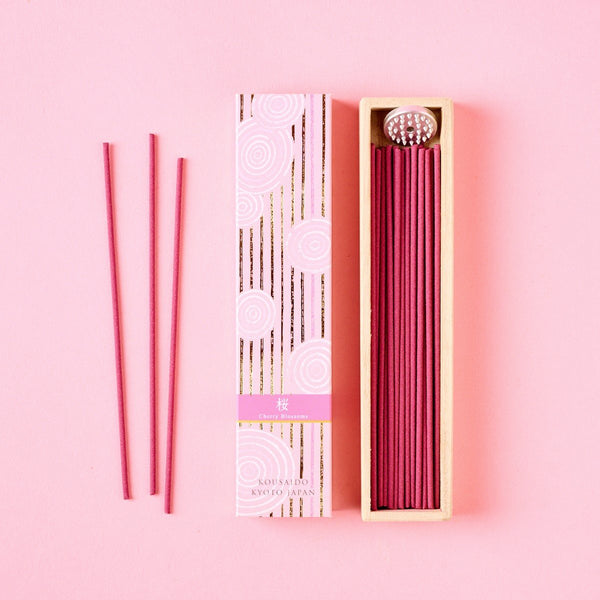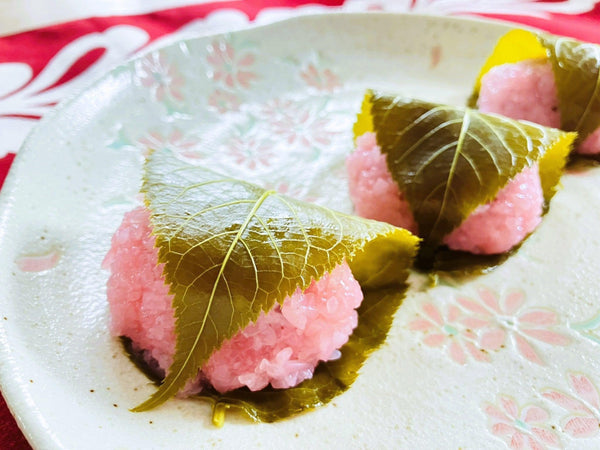
While we previously covered the Kanto style, we are now introducing Kansai-style sakura mochi, a traditional pink wagashi enjoyed during cherry blossom season. Both styles are filled with red bean paste (anko) and wrapped in a pickled cherry leaf, but their textures differ significantly.
The Kansai sakura mochi style is much chewier than the Kanto style. It is a bit like eating a sweet rice ball filled with red bean paste.
This Sakura mochi is also recognized as “Domyoji mochi” because it is made with Domyoji flour, or glutinous rice flour, which was named after the Domyoji Temple in Osaka.
Traditionally, Domyoji flour is used to make Sakura mochi, but it is quite hard to find even in Japanese supermarkets. For making the Kansai style of sakura mochi at home, we recommend making your own Domyoji flour from sweet glutinous rice.
The traditional way to make Domyoji flour is to soak the sweet glutinous rice overnight, then steam it for 30-40 minutes, dry it for one day, and finally crush it. You might be thinking that this takes too much time, but don’t worry! We’re going to share a special way to make this glutinous rice flour by using the microwave.
Not only does using the microwave save time, but this sakura mochi still comes out tasting great!
Additionally, we recommend using smooth red bean paste, Koshi An, as it matches the texture of rice.
With our sakura mochi recipes, you can now try both styles and compare the two flavors and textures. Let us know in the comments which style you prefer!

